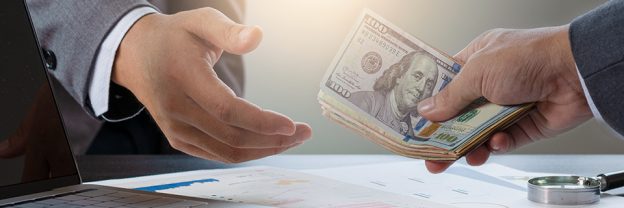
One of the many requirements the EB-5 Immigrant Investor Program imposes upon those who make an EB-5 investment, the obligation to prove the lawful source of funds of the full EB-5 investment has long represented one of the most challenging aspects of an EB-5 investor’s I-526 petition. While EB-5 investors can use EB-5 investment capital derived from any number of sources, whether employment income, funds derived from the sale of assets, or gift money from parents, the need to document its legality remains consistent. Depending on the source, this requirement can be difficult and time-consuming to fulfill.
Then, on top of the onerous task of carefully documenting the lawful sources of all $1.8 million ($900,000 for targeted employment area, or TEA, projects) in EB5 investment capital, investors from certain countries may have an additional source-of-funds burden thrust upon them. Certain countries, often in Asia, the Middle East, and Africa, impose restrictions on the transfer and handling of U.S. dollars within their jurisdiction, with some countries even ruling it illegal to purchase U.S. dollars. Notably, China, Vietnam, and India—the top three nations in terms of EB-5 demand, as of October 2020—all impose some level of restrictions on the transfer of U.S. dollars.
EB-5 Currency Swaps
To bypass the restrictions on U.S. dollars in their home countries, EB-5 investors have taken to engaging in “currency swaps” to invest their capital in a qualifying EB-5 project. The process is straightforward: the EB-5 investor transfers the equivalent of $1.8 million or $900,000 in their local currency to a third-party intermediary, and upon receipt of the transfer, the intermediary transfers the amount in U.S. dollars to the designated escrow account of the EB-5 investor’s project. The problem is that, in 2016, after years of implicitly understanding that a currency swap is the only means many foreign nationals have to make an EB5 investment, United States Citizenship and Immigration Services (USCIS) began to issue requests for evidence (RFEs) demanding that investors provide lawful source-of-funds documentation for the intermediary’s U.S. dollars.
The ease of documenting the legal sources of third-party currency swap dollars depends on the type of currency swap that has occurred. Currency swaps can largely be broken down into three overarching categories:
- A currency swap with an individual personally known to the investor, such as a relative or friend
- A currency swap through a company acting as a licensed money exchanger
- A currency swap with an individual or company not personally known to the investor and not licensed as a money exchanger but who agrees to exchange the capital for a fee
Currency Swaps Through a Known Individual
The first type of currency swap is common among EB-5 investors from China and entails the investor asking a relative or friend with U.S. dollars outside of China to accept their payment of an equivalent amount in yuan and transfer the necessary capital in U.S. dollars to the designated escrow account. If an investor receives an RFE requesting documentation of the legality of the third-party individual’s U.S. funds, they are typically required to prove either how the person earned the U.S. dollars in the third country or how they earned the money in the restricted country and then transferred it to the third country.
Generally, USCIS requests employment records and tax returns from the third party, as well as bank statements from the investor showing the transfer of their local currency to the third party. At the very least, USCIS requires evidence of the third party’s employment. If the friend or family member agrees to provide their personal information and funds documentation to USCIS, the investor is usually approved, assuming no other problems with the I-526 petition. However, if the friend or family member refuses, the EB-5 investor’s petition may be denied.
Currency Swaps Through a Licensed Money Exchanger
When an EB-5 investor contracts a licensed money exchanger to transfer their EB-5 capital to their project’s escrow account, proving the lawful source of the third party’s funds is generally straightforward and simple: typically, all that’s needed is evidence of the company’s license to operate as a currency exchange agent. In countries such as Hong Kong, Singapore, and Australia, money exchangers are subject to strict anti–money laundering regulations, so a valid license is sufficient to prove the lawfulness of the capital.
EB-5 investors who receive an RFE to demonstrate the path of funds in this type of currency swap should supply USCIS with the contract of their deal with the exchange house, the license of the money exchanger, the wire transfer of local currency from the investor to the exchange house, and the wire transfer of U.S. dollars from the money exchanger to the investor’s U.S. bank account or the designated escrow account.
Currency Swaps Through an Unlicensed, Unknown Third Party
Whereas it is relatively easy to demonstrate the lawful source of funds for the first two types of currency swaps, problems arise in the third type, where the investor contracts an unknown, unlicensed individual or company to conduct the transfer for a fee. This may be the only option for EB-5 investors from certain countries in the Middle East, Asia, and Africa, where licensed exchange houses may not operate. Typically, these individuals or companies cannot present source-of-funds documentation or a money exchanger license, although these informal exchange houses sometimes do have business licenses to operate as a currency exchanger, which USCIS may consider acceptable. In some cases, a business with U.S. funds may also be willing to provide business records to justify the lawful acquisition of the currency, allowing the investor to satisfy the source-of-funds requirement for this third-party capital.
Barring these two possibilities, it is often impossible for applicants who have conducted their EB-5 investment through this means to prove the lawful sources of the third-party capital, leading to the denial of their I-526 petition. Thus, EB-5 investors in countries with restrictions on U.S. dollar transfers and no regulatory body for currency exchangers must conduct careful due diligence into their options for transferring their EB-5 capital to the United States. Failure to do so can come with a major cost: the loss of a bright, prosperous future in the United States.











